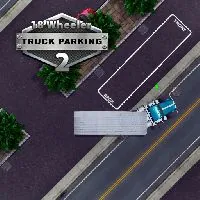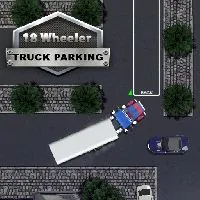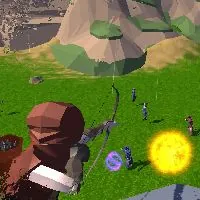HORSE SHOEING
SIMILAR GAMES
Description
Horse Shoeing - Unblocked Games 76
About Horse Shoeing - Unblocked Games 76
We will explore the world of horse shoeing, examining its vital role in equine health and performance. While the term may bring to mind the online game hosted on various platforms, the core activity of shoeing horses has a rich history and complex practice. The purpose of this article is to delve into the authentic practice, providing a comprehensive understanding of the craft, its importance, and related considerations, separate from any gaming context.
The Critical Role of Horse Shoeing
The practice of horse shoeing is more than just attaching metal to a horse's hooves; it is a crucial component of equine well-being. A properly shod horse experiences enhanced comfort, improved gait, and reduced risk of injury. The process itself aims to protect the hoof from excessive wear, correct any conformational imbalances, and provide traction, all of which contribute to the horse's overall health and performance capabilities. Neglecting proper hoof care and shoeing can lead to a myriad of problems, ranging from lameness and discomfort to serious health issues. The skills involved encompass not just the application of shoes but also a deep understanding of equine anatomy, biomechanics, and the diverse needs of different breeds and activities.
Anatomy and Hoof Structure: The Foundation of Good Shoeing
Understanding the anatomy of a horse's hoof is paramount to effective shoeing. The hoof, essentially a modified toenail, is a complex structure composed of several key elements that function together to support the horse's weight and provide movement. These elements include:
- The Hoof Wall: This is the visible outer layer, composed of keratin, a protein also found in human nails and hair. It protects the sensitive inner structures of the hoof and provides attachment points for the shoe.
- The Sole: Located on the underside of the hoof, the sole provides a protective cushion for the sensitive structures below. Its concave shape is crucial for weight distribution and impact absorption.
- The Frog: A triangular, rubbery structure located in the center of the sole, the frog plays a vital role in shock absorption and circulation. It expands and contracts with each stride, assisting blood flow within the hoof.
- The Coronet Band: This is the area where the hoof wall grows from. Damage here can affect hoof growth.
- The Laminae: Interlocking tissues that attach the hoof wall to the underlying bone. These are extremely sensitive to concussion.
A skilled farrier must have a precise understanding of these structures to trim the hoof correctly, select the appropriate shoe, and ensure proper nail placement to avoid injury. Without this knowledge, the horse's movement and health would be deeply affected.
The Farrier's Toolkit: Essential Equipment and Materials
The farrier’s toolkit is an arsenal of specialized tools, each with a specific purpose in the shoeing process. Mastery of these tools is essential for safe and effective shoeing. Some of the key items include:
- Hoof Knives: Used to trim away excess hoof wall and sole material, providing the proper shape and balance.
- Rasps: These are used to level the hoof wall and prepare the surface for shoeing.
- Nippers: Used to trim the hoof wall to the correct length before rasping.
- Shoe Pullers: These are used to remove old shoes.
- Hammers: For shaping and securing the shoe to the hoof with nails.
- Anvils: The farrier uses the anvil to shape the hot shoe.
- Forge: Used to heat the metal shoe for shaping and fitting.
- Shoe Selection: A variety of shoe types are available, including steel, aluminum, and specialty shoes designed for specific needs, such as therapeutic purposes or specific disciplines.
- Nails: Specifically designed nails are driven into the hoof wall to secure the shoe. They are carefully placed to avoid the sensitive inner structures.
The quality of the tools and the farrier’s skill in using them are directly related to the horse's comfort and performance.
The Shoeing Process: A Step-by-Step Guide
The shoeing process is a carefully orchestrated sequence of steps designed to prepare the hoof, fit the shoe, and secure it correctly. The steps are:
- Preparation: The farrier begins by cleaning the hoof and removing any existing shoe.
- Trimming: The farrier trims the hoof wall, sole, and frog to achieve proper balance and alignment. This includes lowering the heels, trimming the toe, and leveling the hoof.
- Shoe Selection and Shaping: The farrier selects the appropriate shoe type based on the horse's activity, conformation, and any specific needs. The shoe may then be shaped, if required, either cold or hot, to fit the individual hoof.
- Fitting: The farrier carefully positions the shoe on the prepared hoof, ensuring a snug and accurate fit.
- Nailing: The farrier drives nails through the hoof wall to secure the shoe. The nails are carefully angled to avoid the sensitive inner structures.
- Finishing: The farrier clinches the nails and rasps any excess hoof material to provide a smooth surface.
Each step is crucial for the long-term health and performance of the horse. A rushed or poorly executed shoeing job can lead to various complications, including lameness and hoof damage.
Different Types of Horse Shoes and Their Applications
The types of horse shoes available are diverse and cater to a wide range of equine activities and needs. The right choice depends on several factors, including the horse's discipline, the terrain it will be used on, and any specific health conditions. Some of the most common types include:
- Steel Shoes: These are the most common type, providing good durability and versatility for general-purpose use.
- Aluminum Shoes: Lighter than steel, these are often preferred for racehorses and horses competing in jumping disciplines.
- Specialty Shoes: These are designed for specific purposes or to address particular hoof problems. These can include heart bar shoes, egg bar shoes, or shoes with pads.
- Therapeutic Shoes: These are used to correct or alleviate hoof-related conditions, such as laminitis or navicular disease.
The selection process requires careful consideration of the horse's individual requirements. The farrier's expertise is vital in recommending the best type of shoe for each horse.
Common Hoof Problems and How Shoeing Helps
Proper shoeing is a critical factor in preventing and managing a variety of hoof-related problems. Some of the most common issues include:
- Lameness: Often caused by poor shoeing, uneven wear, or conformational issues. Proper shoeing can help correct imbalances and alleviate pain.
- Cracked Hooves: Can be caused by dryness, poor hoof care, or improper trimming. Shoe selection can help prevent and manage cracks.
- Thrush: A bacterial infection often caused by unsanitary conditions. Proper trimming and shoeing, including the use of pads, can improve hoof hygiene.
- Navicular Disease: A degenerative condition affecting the navicular bone. Specialized shoeing can help manage the condition and reduce pain.
- Laminitis: A serious and often debilitating condition. Corrective shoeing is an essential part of treatment and recovery.
By addressing these and other issues, proper shoeing contributes significantly to the horse's overall well-being and longevity.
The Importance of Regular Farrier Visits
Regular visits from a qualified farrier are essential for maintaining hoof health and preventing problems. The frequency of visits depends on several factors, including the horse's activity level, the rate of hoof growth, and the type of shoeing used. Generally, horses should be reshod every 6 to 8 weeks. These regular appointments allow the farrier to:
- Trim and Balance the Hooves: Maintaining proper hoof balance is critical for optimal performance and injury prevention.
- Inspect the Hooves: Farriers can identify and address potential problems before they become serious.
- Replace Worn Shoes: Worn shoes can compromise the horse's comfort and increase the risk of injury.
- Monitor Hoof Growth: Farriers can track and manage hoof growth patterns, making necessary adjustments to shoeing.
Consistency in farrier care contributes to the long-term health, well-being, and the performance of your equine companion.
Selecting a Qualified Farrier
Choosing a skilled and experienced farrier is crucial for the health and well-being of your horse. When selecting a farrier, consider the following factors:
- Experience and Training: Look for a farrier with a formal education or apprenticeship. Experience with various horse breeds and disciplines is also beneficial.
- References: Seek references from other horse owners in your area.
- Communication Skills: The farrier should be able to clearly explain their approach and answer your questions.
- Professionalism: The farrier should be punctual, reliable, and respectful of your horse and property.
- Continuing Education: A farrier who stays up-to-date on the latest techniques and technologies demonstrates a commitment to their craft.
A good relationship with your farrier is essential for the long-term care of your horse.
Horse Shoeing and Equine Welfare: Ethical Considerations
The practice of horse shoeing also involves ethical considerations. Farriers must prioritize the horse's well-being above all else. This includes:
- Proper Pain Management: The farrier should be skilled in recognizing and managing any discomfort the horse may experience during the shoeing process.
- Humane Handling: The farrier should handle the horse with care and respect, avoiding any unnecessary stress or discomfort.
- Continuous Learning: A responsible farrier will stay informed about advancements in equine care and shoeing techniques.
- Client Education: A good farrier will educate the owner about hoof care and the importance of regular farrier visits.
A commitment to equine welfare is a defining characteristic of a professional and ethical farrier.
The Future of Horse Shoeing: Innovations and Advancements
The field of horse shoeing is constantly evolving, with ongoing research and development. Recent innovations and advancements include:
- New Materials: Advances in materials science are leading to lighter, more durable, and more specialized shoe designs.
- Digital Technologies: Digital tools are being used for hoof measurements and shoe design.
- Therapeutic Approaches: New methods of shoeing and hoof care are emerging to address a wider range of hoof-related problems.
- Emphasis on Biomechanics: A deeper understanding of equine biomechanics is driving the development of more effective shoeing techniques.
These advancements promise to further improve equine health and performance in the years to come, ensuring that horse shoeing continues to play a vital role in the care of our equine partners.
Play Horse Shoeing for free on Unblocked Games 76, A platform packed with thousands of exciting games, completely ad-free and ready to play anytime, anywhere. Enjoy smooth gameplay with just your keyboard or a simple click—have fun with our unblocked collection!
How to Play Unblocked Games
Unblocked games are a fantastic way to enjoy fun and interactive content right from your browser. They’re called unblocked because you can access them anywhere – at school, work, or home – even on networks that normally restrict gaming. These games run on standard web technologies (like HTML5), so no downloads or installations are required. This means you can start playing instantly without worrying about viruses or extra software.
Whether you’re into action-packed shooters, brain-teasing puzzles, or fast-paced racing challenges, unblocked games offer something for everyone. In this universal guide, we’ll cover how to start playing any unblocked game, go over common controls, and share some handy tips to enhance your gaming experience.
Getting Started: Launching the Game
Playing an unblocked game is quick and easy. Here are the general steps to get you started with any browser-based game:
Open the Game Page: Launch your web browser (like Chrome or Firefox) and navigate to the game’s page. The game will usually begin loading automatically.
Wait for the Game to Load: Give the game a moment to load all its assets. Most unblocked games have a loading bar or percentage indicator – patience for a few seconds ensures the game runs smoothly.
Click “Play” to Begin: Once you see a Play or Start button on the game screen, click it. Some games might jump straight into action, while others show a main menu or instructions first.
Understand the Goal: Take a quick look at any on-screen instructions or story intro. Generally, your aim could be anything from beating opponents to solving all puzzles or reaching the end of a level. Knowing what the objective is will help you play more effectively.
Use the Controls (Keyboard/Mouse): Start interacting with the game using your keyboard and mouse (see the next section for common controls). For example, you might press keys to move or jump and use the mouse to aim or select options.
Enjoy and Explore: Now you’re playing! Navigate through levels or matches, and feel free to explore different modes or settings if the game offers them. Each game might have unique features (like multiple levels, difficulty settings, or multiplayer mode), so try them out for the full experience.
That’s it – you're in! One of the best things about unblocked games is how straightforward it is to start playing. There’s no need to sign up or install anything, and restarting or trying a new game is as simple as refreshing the page or opening another game link.
Mastering the Controls and Gameplay
Every game has its own set of controls, but many browser games share similar key bindings and mouse controls. If you’re not sure how to control this game, don’t worry. Below are common controls and how they typically work in unblocked games:
Movement: Use the arrow keys or WASD keys to move your character or navigate around. For example, press the left/right arrows (or A/D) to move sideways, and up arrow (or W) to jump or climb ladders in some games.
Jumping/Climbing: The Spacebar is often used to make your character jump. In some games, the up arrow or W key also triggers jumping or climbing actions. If the game involves flying or swimming, these keys might help you move upward.
Action/Shoot: For many action or shooting games, use the mouse Left Click to fire a weapon or perform an action. In other games, keys like X, Z, or Ctrl might perform special actions (like attacking or interacting with objects). Pay attention to hints – games often display the specific action key at the start or when you pick up an item.
Aim/Look Around: Move your mouse to aim or look around if the game is 3D or involves aiming (like in shooting games). Some games use the Right Click or Shift key to let you aim down sights or to toggle your view.
Switching Items/Weapons: If the game allows switching between tools or weapons, the number keys 1-4 (or higher) are commonly used to swap. Alternatively, some games use the Q and E keys or the mouse wheel to cycle through inventory items.
Interact/Pick Up: To interact with objects or pick up items, games often use E or F keys. Walking up to an object (like a door or treasure) and pressing one of these keys usually triggers an interaction.
Pause/Menu: Need a break? Hitting the Esc key typically pauses the game and opens a menu. In other cases, there might be a pause button on the screen or keys like P used for pausing. Pausing lets you adjust settings (like sound volume) or quit to the main menu.
Restart/Reset: If you want to restart a level or try again quickly, look for a reset button or use R (a common key for restarting in many games). Some games also automatically restart the level if you fail, with a simple click to try again.
Remember, each game might have a few unique controls, so it’s a good idea to check if the game displays a “Controls” or “Help” section in its menu. Many unblocked games show the controls briefly at the beginning or have an info icon you can click for details. Once you get the hang of the basic movements and actions, you’ll be ready to tackle the game’s challenges!
Tips and Tricks for the Best Experience
Playing unblocked games is meant to be fun and stress-free. Here are some universal tips to help you get the most enjoyment (and maybe a high score or two):
Start Slow and Learn: If you’re new to a game, take a moment to familiarize yourself with the controls and mechanics. Often the first level or few minutes act as a tutorial. Don’t rush – learning how the game works will make it more enjoyable and save you from unnecessary mistakes.
Use Practice Modes (if available): Some games offer practice modes, tutorials, or easy levels. These are great to try first, especially for competitive games. They let you hone your skills before jumping into harder levels or multiplayer matches.
Stay Focused on Objectives: Keep an eye on what the game asks you to do. Whether it’s collecting a certain number of coins, reaching a finish line, or defeating a boss, focusing on the goal will help you progress. If there’s a timer, plan your moves accordingly; if there are multiple objectives, tackle them one by one.
Mind the Sound: Game audio can give useful feedback (like alerts when an enemy is near or a clue that you solved a puzzle). If you’re in a public place like a classroom, consider using headphones so you can hear the game without disturbing others. Alternatively, you can mute the game from its settings if you need to play quietly – just make sure you keep an eye on visual cues instead.
Play Safe and Fair: Unblocked games are free and easy to access, but always play them on trustworthy websites (like the one you’re on). Avoid clicking on suspicious ads or external download links – you don’t need any extra files to play these games. Also, stick to fair play: using cheats or hacks (if you ever encounter them) can ruin the fun and might even get the game blocked.
Take Breaks: It’s easy to lose track of time when you’re having fun. Remember to take short breaks, especially if you’ve been playing for a while. A quick stretch or resting your eyes will keep you fresh and focused, and then you can come back and score even better!
Try Different Games: One huge benefit of unblocked gaming is the variety. If one game isn’t your style or you’ve mastered it, there are always other genres to explore. From racing and sports to strategy and adventure, trying a new game can keep things exciting. Don’t be afraid to explore the game menu or site for other titles.
By keeping these tips in mind, you’ll enhance your gaming experience and possibly impress your friends with your skills. Every game has its learning curve, so be patient and enjoy the process of getting better.
Conclusion
Unblocked games open up a world of entertainment that you can enjoy anytime, anywhere. Now that you know how to launch a game, handle the basic controls, and use smart strategies, you’re all set to dive in and have a blast. This universal guide applies to countless games out there, so you can reuse these tips and know-how no matter what you play next.
Remember, the key is to have fun and enjoy the game. Whether you’re filling a short break or settling in for a longer gaming session, unblocked games provide quick, accessible fun at your fingertips. So go ahead – pick a game, hit that Play button, and immerse yourself in an exciting gaming adventure. Good luck and happy gaming!
















































